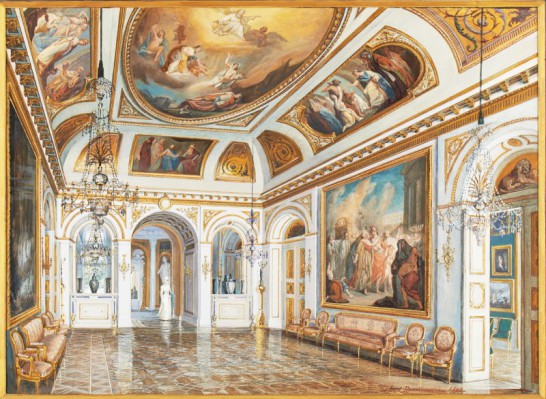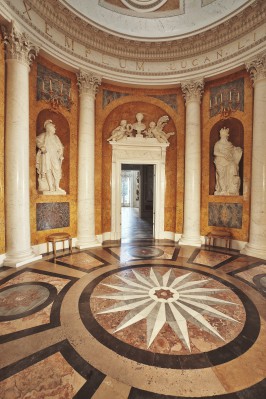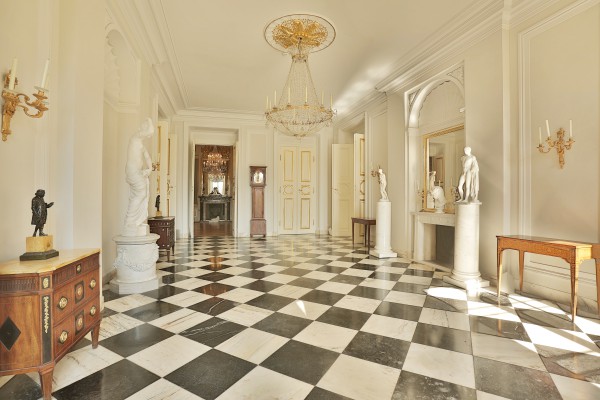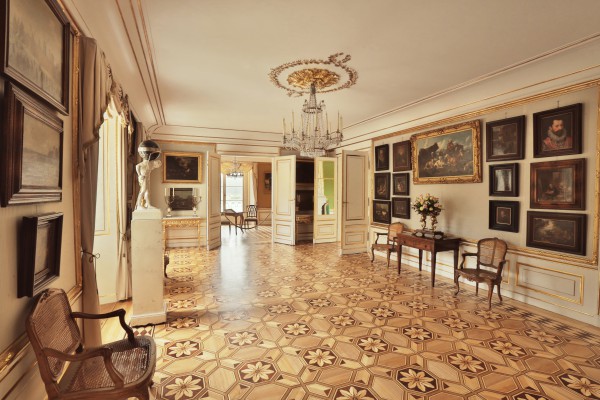
The Antechamber
The Hallway – a spacious interior rectangular in plan – was added to the Bathhouse in 1788. It was designed by Johann Christian Kamsetzer. After the last conversion in the years 1788-1795, the main entrance to the Palace was located on the east side and led precisely through the Hallway, also called the Antechamber (Fr. Antichambre – "hallway"). The room’s decor is very modest, with straight wall partitions, distinguished by cool and Classicist elegance. Its main decorative elements are two tall niches crowned with a large, stylized shell. This motif alludes to the decorations of the other interiors of the Palace on the ground floor, which include numerous references to the original function of the residence. In one of the niches stands the statue of Aphrodite Anadyomene – i.e. Aphrodite “emerging from the water”. It comes from the collection of sculptures and casts of Stanisław August. It is an 18th century copy of an Ancient sculpture, with reconstructed head and hands. The second niche is located on the opposite side; it houses a fire place and is framed with two small sculptures standing on tall pedestals. These works of art include: the marble statuette of Germanicus and Venus made by Antonio Canova, the most eminent Italian sculptor of late 18th and early 19th century. The olive-coloured walls beautifully contrast with pieces of furniture produced in Poland in the second half of the 18th century.
It is worth paying attention to two sculptures standing on the small commodes. They are bronze figures of Voltaire and Rousseau, which remind us of the character of the 18th century – the Age of Reason. Stanisław August maintained correspondence with the first of these philosophers. The second one was also connected with the Republic of Poland; in 1771, Rousseau published an essay entitled “Considerations on the Government of Poland and on its Proposed Reformation”. He appreciated Polish people for their special love of liberty.



















